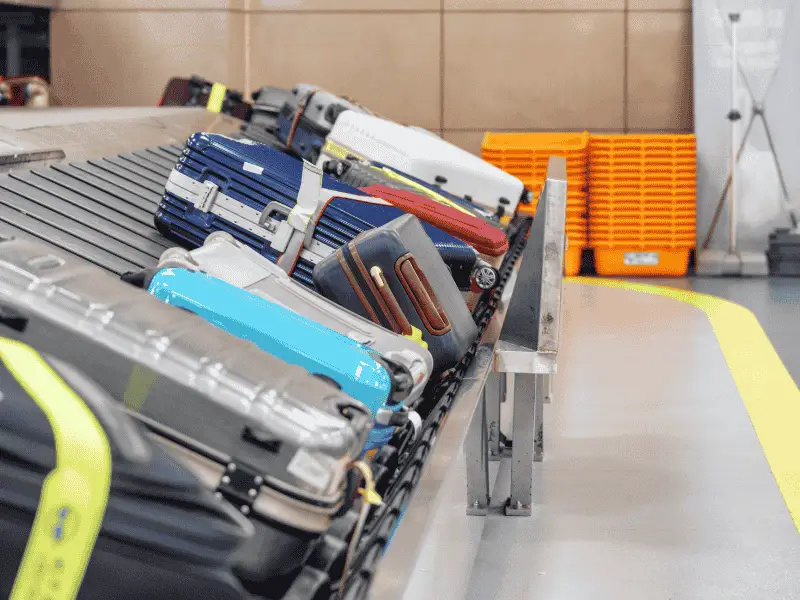A veteran airport maintenance professional has brought to light surprising factors that could be causing luggage loss and damage at major airports, revealing that seemingly innocent choices in luggage selection and packing habits might be the difference between a smooth journey and a lost bag nightmare.

Modern airports handle an astounding volume of baggage daily, with major hubs processing between 3,000 to 5,000 pieces of luggage per hour during peak times. At larger facilities, daily passenger counts can exceed 120,000 people moving through terminals for departures, arrivals, and connections. This massive scale creates significant challenges for baggage handling systems and the teams that maintain them.
One of the most unexpected revelations concerns luggage appearance. While metallic and mirrored finishes might make bags stand out in the terminal, these stylish choices can actually render luggage virtually invisible to automated handling systems. The reflective surfaces interfere with optical scanning equipment by bouncing sensor beams back to their source, preventing proper routing through the complex network of conveyor systems.
Material Matters: The Case for Hard-Shell Luggage
The debate between hard-shell and soft-sided luggage takes on new significance when considering baggage handling systems. Hard-case luggage demonstrates superior resilience when encountering the mechanical components of conveyor systems. While both types may experience compression between diverters, hard-shell cases typically retain their shape, whereas fabric bags with wire frames risk structural damage or complete failure.
The Hidden Dangers of Duffle Bags
Duffle bags, despite their popularity and convenience, present particular challenges in automated baggage handling systems. These bags account for approximately half of all system disruptions, primarily due to their loose handles becoming entangled in conveyor mechanisms. When such incidents occur, they can trigger chain reactions affecting hundreds of other pieces of luggage, creating significant delays and increasing the risk of lost bags.
When a single piece of luggage causes a system disruption, the consequences extend far beyond that individual bag. Baggage pile-ups can occur rapidly, affecting travelers on multiple flights and requiring immediate intervention from maintenance teams. These situations demand quick resolution while maintaining strict safety protocols, creating additional stress on the system and increasing the likelihood of routing errors.
Telescoping handles, while convenient for travelers, can become significant liability points if their locking mechanisms are compromised. Even slight damage to these components can lead to handles extending during transport, creating snag points that interrupt smooth movement through the system. This highlights the importance of maintaining and regularly inspecting luggage hardware.
Excessive packing presents another significant risk factor. Overfilled bags are more susceptible to bursting open during transport, particularly when subjected to the normal stresses of automated handling systems. Such incidents not only risk losing personal belongings but can also cause system-wide delays as staff must clean up spilled contents and restore normal operations.
Identifying Features and Their Risks
Common luggage identifiers such as decorative scarves, ribbons, and oversized tags present additional hazard points in automated systems. While these accessories help owners quickly identify their bags at claim areas, they can become entanglement points in conveyor systems, leading to bag separation from intended routing paths.
Understanding these risks enables travelers to make informed decisions about luggage selection and preparation. Securing or removing loose elements, choosing appropriate luggage types, and avoiding problematic design features can significantly reduce the risk of baggage mishaps. This extends to proper packing techniques that prevent strain on zippers and seams.
Contemporary baggage handling systems represent marvels of automation, capable of processing thousands of items hourly. However, these systems rely on specific parameters for optimal function. When luggage characteristics fall outside these parameters, the sophisticated technology can falter, leading to routing errors and potential loss.
The limitations of current scanning and routing technology create specific vulnerabilities in baggage handling systems. Reflective surfaces confuse optical scanners, loose items jam mechanical components, and non-standard shapes challenge automated sorting mechanisms. Understanding these limitations helps explain why certain luggage types experience higher incident rates.
Lost or damaged baggage incidents create ripple effects throughout airport operations. Staff must be diverted to resolve system jams, track missing items, and process claims. This diverts resources from normal operations, potentially affecting service quality for all travelers.
This insight into baggage handling operations provides valuable guidance for travelers seeking to protect their belongings during air travel. By understanding the underlying causes of luggage loss and damage, passengers can make informed decisions about luggage selection and preparation, significantly improving their chances of trouble-free travel.




